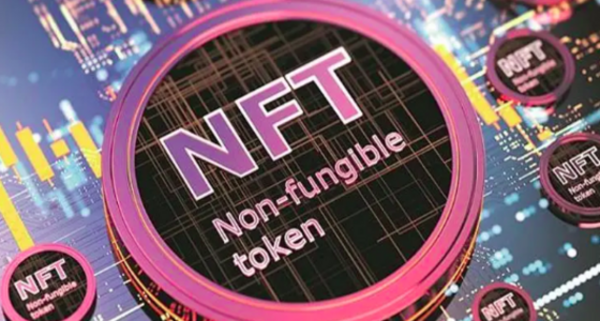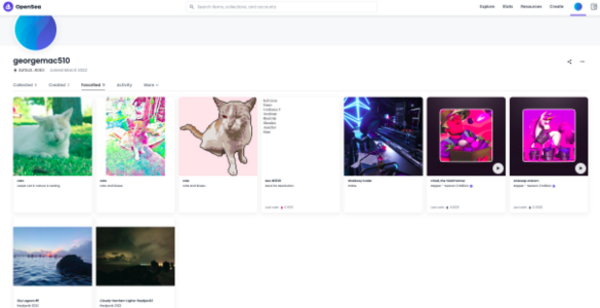john-mac.eth
@GeorgeMac510NFT Hosting on OpenSea and Rarible
Created by:
What are NFTs?
In the traditional world where you purchase an item, such as a piece of artwork, you become its new owner and you’re able to physically take it home and hang it on your wall because it is a tangible item. If it is the original, there is only one which adds that element of rarity.
In the digital world, anything can be duplicated across the Internet which leaves the idea of an original, a concept that might be hard to prove. NFTs are able to solve this problem by connecting the original digital item to its owner. The digital item can be stored on a network such as IPFS or Arweave by way of a cryptographic hash that is nearly impossible to duplicate. The hash is then deployed as a unique and irreplaceable non-fungible token or NFT, to a public blockchain, such as Ethereum, or Polygon. The deployment of the NFT is now recorded on the ledger of the blockchain, and stands as a cryptographic record that your blockchain wallet address, and no other, is the owner of that unique NFT.

NFT Non-fungible Token, by thatsnonsense.com is licensed by CC by 4.0
NFTs are disrupting many industries such as art and collectibles, medicine, investing and video gaming. Although non-fungible tokens have been disruptive over the last 2+ years, their full potential and capability as a means to transfer ownership has not been fully realized. The growth and use cases for NFTs are extensive and have a very bright future over the next decade or so.
OpenSea.io

Since its launch in December of 2017, OpenSea.io has grown into the the largest digital marketplace to date. As of June 2022, OpenSea boasts 200+ employees, 600K users, two million collections, over 80 million NFTs, and over $20 billion in annual trading volume.
On the OpenSea platform itself, you can currently create your own NFTs on the Ethereum, Polygon and Solana mainnet blockchains as well as the Goerli and Mumbai testnets.
The following steps will allow you to deploy your NFT in a matter of minutes:
- upload your image
- name and give the NFT a brief description
- add a URL link to where the image is located
- add properties to the new NFT
- choose the supply and the blockchain to deploy the NFT to
- then click Create.
OpenSea will also render NFTs that you may have at your wallet address when you Connect Wallet. It will also render NFTs by the smart contract address that created the NFT.
Rarible.com

Similar to OpenSea, Rarible.com is an Ethereum-based platform founded by Alex Salnikov in 2020 that allows users to mint, buy and sell NFTs as well as create and showcase NFT collections. The whole process of buying, selling and minting is easier and cheaper on Rarible, as you are eliminating payment to a middleman. It also supports chains other than Ethereum such as Polygon and Immutable X which allows the user to save on gas fees.
Rarible also helps users research the latest and trending NFT collections through its busy and well-viewed blog. If you have your image ready for deployment and you have a wallet funded with ETH, it is a matter of a few point-and-clicks and you will have an NFT deployed on the Ethereum Mainnet and the NFT listed for sale on the Rarible platform for a price and sale duration of your choosing. The commission fee is a fair 2.5% and is only paid if the transaction occurs between two Rarible members. The platform is very secure as the collectibles are protected by blockchain technology, users need to verify their identity with photo and identification proof and their Twitter account can also be linked to their Rarible account.
Rarible has issued its own RARI token which will allow holders to participate in the platform’s DAO (decentralized autonomous organization) and vote on DAO self-governance proposals.
Both of these platforms are continually being improved with additional functionality, stronger security and a better user experience.💥